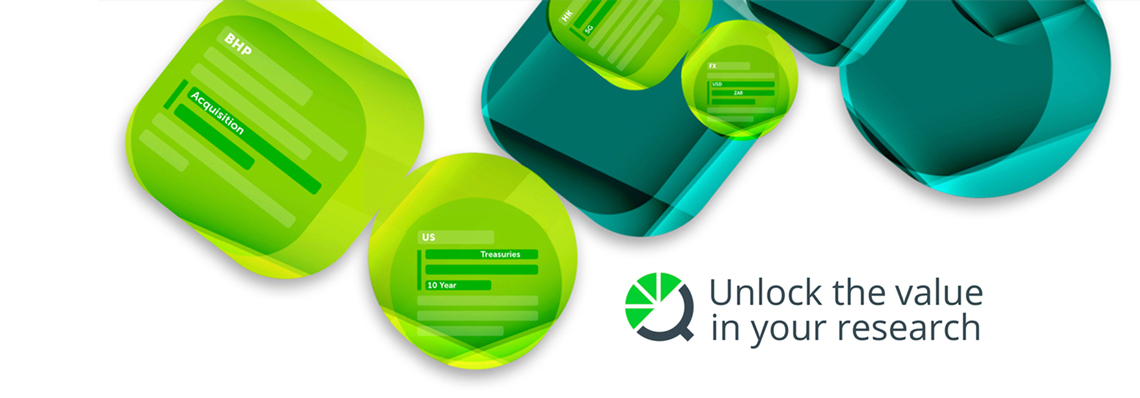Are you maximising your financial research in FX?
Access to relevant and timely research is essential for trading decisions of any financial instrument, and this is exemplified in foreign exchange (FX), the most liquid global market with the longest trading hours and the largest variety of participants. In the first of a series of discussions, Simon Gregory and Rowland Park, Co-Founders of Limeglass, discuss some key issues of consideration for FX market participants.
How can financial research become more valuable for the foreign exchange (FX) market?
With an average of $6.6tn of trades per day, the FX market underpins many investments and all international capital flows. The ability to make or advise on appropriate transactions depends upon participants having access to the right information at the right time.
There are two sides to the coin. Firstly, for research publishers, it is imperative that their material reaches their audiences, and is read. Delivery is required in an appropriate and easily digestible manner, making their output an integral part of their clients’ operations. Secondly, for report recipients, it is imperative that they can access the relevant information and gain insights upon which to make informed choices and provide suitable advice and thus differentiated value for their clients’ end goals.
Whether producing or reading research, time is often limited, however, information is vast, with snippets of high-value information buried deep in documents. So how can the two be correlated effectively?
This can only be done if FX risk managers and sales teams are able to smartly access information, fully capitalising on the intelligence they receive via research reports and news articles. Banks and other financial institutions produce and receive hundreds of pages of research each day, yet these reports are seldom used to their optimal value.
Optimisation of research at key working moments is vital, yet this is not often possible, due to the incumbent search methods. For example, when an analyst or portfolio manager is researching information to potentially rebalance weighting of a fund, when a salesperson is responding to a client query, or supporting a client with the execution of a trade, traditional search methods such as scrolling through an email inbox or using Control+F on a text document obstruct commercial opportunity. The continuous high volume of reports combined with the multiplicity of sources to try and glean value from makes this a largely inefficient and frustrating process, making it difficult even for experts to be truly knowledgeable in many areas at once.
The issue is exacerbated as keyword-based searches produce very narrow ineffective results, as other relevant words and phrases within the context of the subject will be missed. For example, a search on the ‘pound to dollar rate’ would only reveal sections of reports that referred to those particular words; other sections containing words and phrases such as ‘sterling’, ‘cable’, ‘greenback’ and ‘GBP/USD’ or simply ‘GBP’ would not be revealed. Moreover, adjacent contextual references to topics that affect the FX market, including the current UK interest rate or latest announcement by the US Federal Reserve would also be missed.
As an example, imagine you get a call from a client asking for relevant information concerning the morning’s drop in the AUD price: you’d want to answer the query with accurate, timely information about the cause, along with announcements from the Reserve Bank of Australia’s (RBA) Governor stating what was said, the RBA international reserves portfolio, and other influencing factors. Additionally, you would also want to quickly access information about previous recent dramatic prices moves and research that has been undertaken on them. If you’re not able to respond quickly and accurately, you may inadvertently impede your client’s decision-making and thus negatively impact the client relationship.
What technological innovations in research can help drive the FX market?
Technology in trading execution and front-office activities has been part of the FX landscape for some years now, making those processes easier and quicker. Yet progress in research capabilities has lagged behind, with the result that the basis for deciding which trades to execute is not commensurate with front-office advancements. However, there are now a number of technologies that can be assimilated to provide a new method of operation for research teams.
In combination, the use of artificial intelligence (AI), proprietary rich natural language processing (NLP) and machine learning form Limeglass’s powerful and user-friendly technology. With such a comprehensive tool, documents can be broken down with AI and combined with human-based knowledge, and tagged so that each paragraph will have any number of identifying markers. At Limeglass, we call this ‘document atomisation’.
The use of rich NLP ascertains the context for each paragraph and consequently tags it appropriately. For instance, if the UK’s trade imbalance is affecting GBP/USD, and an article on the UK has a paragraph talking about the trade figures without mentioning the UK, that paragraph will still be smart-tagged with ‘UK-Trade Balance’. Not only has Limeglass worked out the context but the system has more than 60 synonyms linked to trade balance alone that will ensure that all similar paragraphs can be surfaced at the click of a button. This ‘smart paragraph tagging’ offers an intuitive guide to what is happening in any given market.
In addition, Limeglass’s comprehensive cross-asset taxonomy means that tagging is made at a granular level of detail, encompassing any particular topic or theme in any geographic region. A conjunction of human expertise and machine learning support a constant expansion of the Limeglass lexicon, incorporating new words and concepts as they appear in research.
What insights can FX participants gain from using these new processes?
Using comprehensive and intuitively designed technology will enable those who are trading currencies, serving those who are trading, or making investment decisions based on international circumstances gain real insights into direct market activity and other socio-economic issues.
For example, a fund manager might be considering whether to invest in a UK car manufacturer. Knowledge of its share price and its recent performance is key, but there could be various other considerations to take into account.
The manufacturer’s C-suite may be deciding whether to order components from Germany or Sweden and so they will need to research which suppliers in either country are likely to provide the best deal. They’ll want to know what the rate is for EUR/GBP and GBP/SEK, as well as recent currency moves to determine any trends and what their top banking providers think about these suppliers; and they’ll want to find this out in a quick and convenient manner.
It would also be advantageous to learn of additional factors that might affect their decision, such as the reliability of delivery of raw materials that those suppliers need, or holiday shut-downs in either country. Further influences might also come into play, including new regulations that are due to come into force or planned industrial strikes that will affect production and delivery.
Consequently, these factors not only affect the decisions that the car manufacturer will make, but also influence its perceived future performance in the mind of the fund manager.
In achieving both an international overview of currency markets and the possibility to drill down to the determinants of any specific market or company, the FX participant is empowered with real insights to make beneficial decisions.



